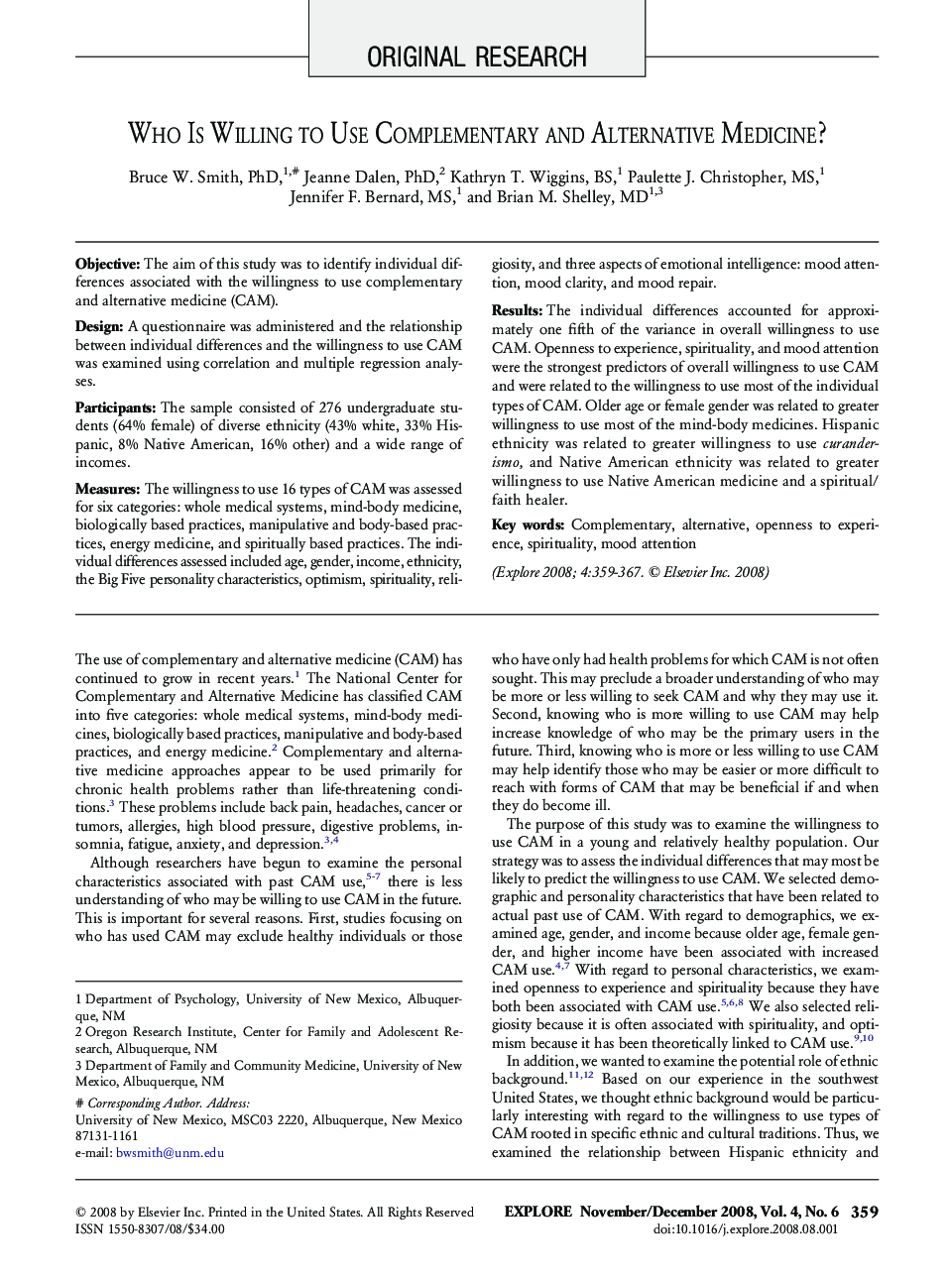| Article ID | Journal | Published Year | Pages | File Type |
|---|---|---|---|---|
| 2686211 | EXPLORE: The Journal of Science and Healing | 2008 | 9 Pages |
ObjectiveThe aim of this study was to identify individual differences associated with the willingness to use complementary and alternative medicine (CAM).DesignA questionnaire was administered and the relationship between individual differences and the willingness to use CAM was examined using correlation and multiple regression analyses.ParticipantsThe sample consisted of 276 undergraduate students (64% female) of diverse ethnicity (43% white, 33% Hispanic, 8% Native American, 16% other) and a wide range of incomes.MeasuresThe willingness to use 16 types of CAM was assessed for six categories: whole medical systems, mind-body medicine, biologically based practices, manipulative and body-based practices, energy medicine, and spiritually based practices. The individual differences assessed included age, gender, income, ethnicity, the Big Five personality characteristics, optimism, spirituality, religiosity, and three aspects of emotional intelligence: mood attention, mood clarity, and mood repair.ResultsThe individual differences accounted for approximately one fifth of the variance in overall willingness to use CAM. Openness to experience, spirituality, and mood attention were the strongest predictors of overall willingness to use CAM and were related to the willingness to use most of the individual types of CAM. Older age or female gender was related to greater willingness to use most of the mind-body medicines. Hispanic ethnicity was related to greater willingness to use curanderismo, and Native American ethnicity was related to greater willingness to use Native American medicine and a spiritual/faith healer.
